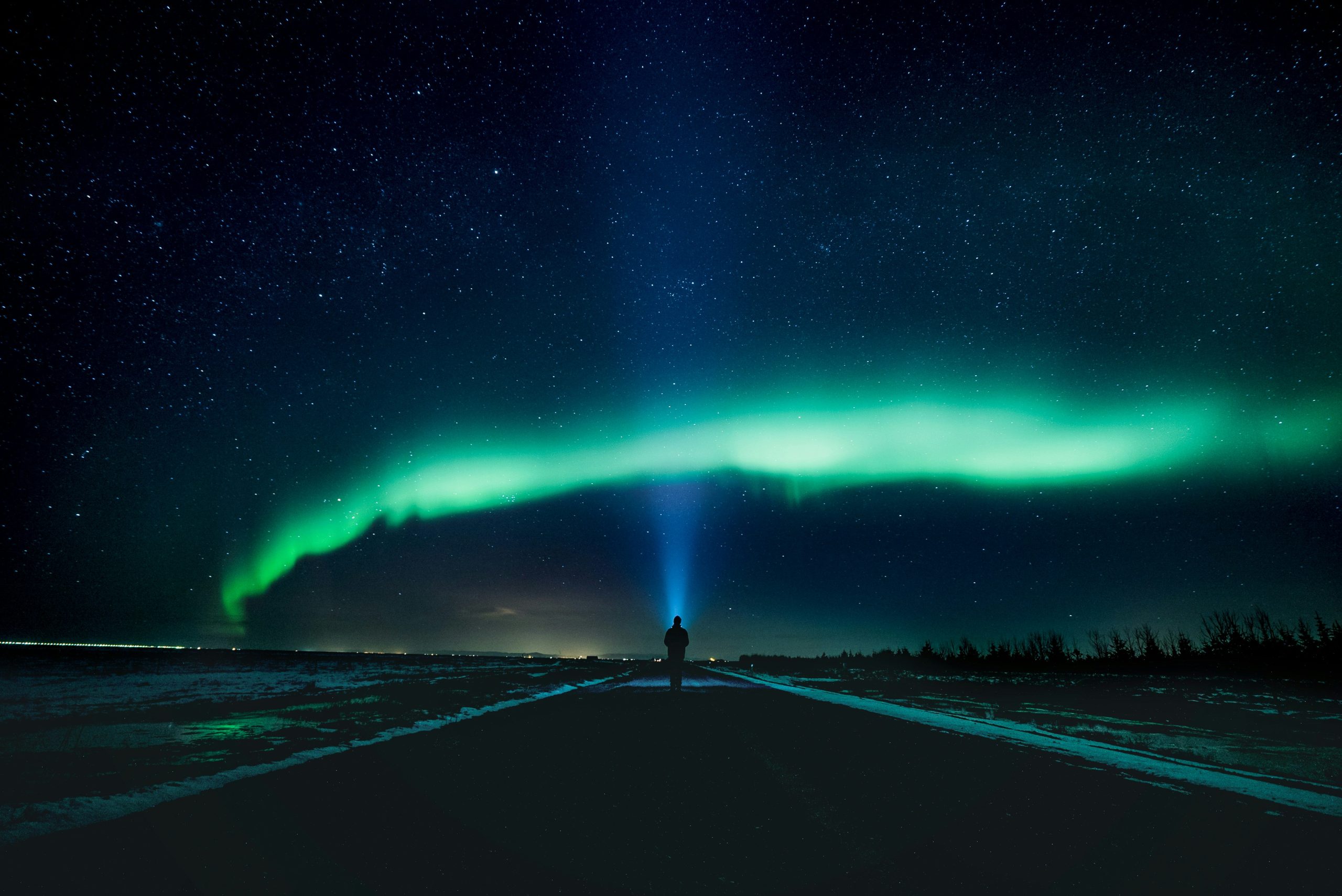The Top Orthodox Christmas Festivities Around the World

Looking for more amazing products? Check out our online store and explore our collection here! Happy shopping!
Before diving in, please note: This post is for informational purposes only. If you’d like to know more about how we approach topics, feel free to check out our friendly Disclaimer Page.
Hey there, amazing readers! 
We’re committed to delivering quality posts, and your support (even just sticking around despite the ads) means everything to us. So, bear with us, and thanks for helping us keep the good vibes rolling. Now, on to the fun stuff!
TRANSLATE BUTTON AT THE END OF THE ARTICLE
A Quick Overview
Christmas is a time for joy, hope, and togetherness, but did you know that the Orthodox Christmas celebrations are rich in history and vibrant traditions?
Celebrated on January 7, Orthodox Christmas showcases a blend of religious observance and cultural practices that vary dramatically from country to country.
In this article, we’ll explore the festive customs of Orthodox Christians around the globe, highlighting the unique traditions that make each celebration special.
So, grab a cup of your favorite holiday drink, get cozy, and let’s dive into the heartwarming festivities that bring people together every winter.
Discovering the Rich Traditions of Orthodox Christmas
The Orthodox Christmas season is deeply rooted in the Christian faith, celebrating the birth of Jesus Christ.
Unlike their Western counterparts, Orthodox Christians often follow the Julian calendar, which places Christmas on January 7.
This date is not just a mark on the calendar; it signifies a period filled with anticipation, prayer, and family gatherings.
Traditionally, the festivities begin with Advent, a time of fasting that lasts for 40 days.
This fasting period allows believers to prepare spiritually for the arrival of Christ.
As the day approaches, the atmosphere becomes increasingly festive, with churches lit up, and joyful hymns echoing in the air.
Each country boasts its own set of traditions, rituals, and customs that reflect its cultural heritage.
From unique foods and special services in churches to vibrant carols sung in the streets, the celebrations are as diverse as the communities that observe them.
In many places, there’s a palpable sense of joy and love, often expressed through family gatherings, communal meals, and acts of kindness.
The spirit of Orthodox Christmas extends beyond the church and into the homes of believers.
Families often engage in various activities, from decorating their homes to preparing special feasts.
It’s a time for storytelling, sharing memories, and reflecting on the meaning of Christmas.
When we look at Orthodox Christmas celebrations, we see a beautiful tapestry of faith, tradition, and community.
Each thread weaves together stories of hope, love, and the promise of new beginnings.
Unique Customs in Russia: A Celebration of Faith
In Russia, Christmas is steeped in tradition, with customs that reflect the country’s deep-rooted Orthodox faith.
The festivities often kick off with a period of fasting known as “Filipievka,” which lasts until Christmas Eve.
The strict fast culminates in a special dinner on the eve of January 6, where families gather to share a meal known as “sochivo,” made of wheat or rice and often sweetened with honey and fruit.
As midnight approaches, the streets are filled with the sound of church bells ringing, signaling the beginning of the Christmas celebration.
Many Russians attend a midnight service at their local church, filling the pews and singing hymns that resonate with the joy of the season.
On Christmas Day, families exchange gifts and gather to enjoy a festive meal.
Traditional dishes like roasted goose, borscht, and various pastries adorn the table.
It’s common to see children dressed as angels or shepherds, reenacting the Nativity story, a cherished tradition that brings smiles and laughter.
In some parts of Russia, people engage in a custom called “kolyadki,” where they sing carols from house to house, spreading holiday cheer and blessings for the coming year.
This practice isn’t just about singing; it’s about building community ties and fostering a sense of belonging.
Christmas in Russia is not just a holiday; it’s a time for spiritual renewal, family bonding, and a celebration of the faith that binds people together.
The warmth of this celebration lingers long after the decorations have been taken down.
The Joyous Feast: Greek Orthodox Christmas Traditions
The Greek Orthodox Christmas celebration is a delightful blend of religious solemnity and joyous festivity.
The festivities begin with a 40-day fasting period leading up to Christmas, during which many Greeks abstain from meat and dairy products.
This ends with a grand feast that sweeps across the country on Christmas Day.
On Christmas Eve, after attending the midnight church service, families gather for a traditional meal that often includes “Christopsomo,” a sweet bread made with spices, nuts, and dried fruit.
This bread is typically adorned with a cross, symbolizing Christ and the family’s faith.
In Greece, it’s also common for families to have a festive tree decorated with ornaments, lights, and sometimes even a wooden boat, symbolizing the country’s rich maritime history.
The tree represents giving and sharing, which are essential themes of the holiday.
On Christmas Day, the atmosphere is lively.
Families enjoy a grand feast that features roasted lamb, a variety of side dishes, and desserts like “melomakarona” (honey cookies) and “kourabiedes” (butter cookies).
The meal is often accompanied by laughter, storytelling, and the sharing of cherished family traditions.
A unique aspect of Greek Christmas is the emphasis on community and charity.
Many families take this time to donate to the less fortunate, reflecting the spirit of giving that is central to the holiday.
In Greece, Christmas is more than a celebration; it’s a heartfelt expression of faith, community, and love that echoes throughout the festivities.
Ukraine’s Vibrant Carols and Traditional Dishes
In Ukraine, Christmas is a vibrant affair, rich with customs that celebrate both the spiritual and cultural aspects of the holiday.
The festivities typically begin on January 6, with “Sviata Vecheria,” or Holy Evening, where families gather for a special meatless meal after sunset.
This meal usually consists of twelve dishes, representing the twelve apostles, and includes items like borscht, varenyky (dumplings), and uzvar (a traditional fruit drink).
One of the most cherished customs in Ukraine is singing carols, or “koliadky.” Groups of carolers visit homes, singing traditional songs that tell the story of Christ’s birth.
In return, they receive treats, coins, or even small gifts, creating a sense of joy and community spirit.
After the meal, families light candles in their windows, symbolizing the light of Christ entering the world.
This act is both a form of devotion and a way to welcome others into their homes.
On January 7, following the midnight service, families celebrate with more feasting and merriment.
Traditional dishes like roast pork and sweet bread called “paska” are served, ensuring that the Christmas spirit continues to fill the air.
The Ukrainian celebrations are a beautiful blend of religious observance and cultural heritage, where each custom tells a story of faith, community, and love.
The joyous atmosphere, combined with the warmth of family gatherings, makes the holiday truly special.
Serbian Orthodox Christmas: Rituals and Celebrations
In Serbia, Christmas is celebrated with distinct customs that reflect the country’s rich cultural heritage and Orthodox faith.
The festivities begin on January 6 with a day of fasting and prayer.
On Christmas Eve, families partake in the tradition of “Badnjak,” where they cut down a young oak tree and bring it into their home, symbolizing the birth of Christ.
The Badnjak is adorned with straw and decorated with various items, creating a festive atmosphere.
Families gather around the fire in the evening, where they share stories and enjoy a simple meal of beans and cabbage, honoring the fast.
On Christmas Day, the celebrations come alive.
Families attend the Divine Liturgy, where congregants sing hymns and celebrate the Nativity.
Afterward, the homecoming feast begins, with tables laden with roasted meats, pastries, and traditional cakes.
A unique practice in Serbian Christmas celebrations is the exchange of gifts and blessings among family members.
Children often receive special presents from their parents and relatives, creating excitement and joy.
Serbian Christmas also emphasizes community involvement.
Families often visit neighbors and friends, sharing meals and blessings, fostering a sense of unity and camaraderie.
Overall, Serbian Orthodox Christmas is a time of reflection, joy, and connection, where traditions are upheld and new memories are created in the warmth of family and community.
Bulgaria’s Unique Christmas Eve Traditions Explained
In Bulgaria, Christmas Eve, known as “Koledna Vecheria,” is a beautiful celebration filled with unique customs and traditions.
The evening is primarily vegetarian, in line with the fasting period that precedes Christmas.
Families prepare an array of dishes, including “sarmi” (cabbage rolls), “bob” (bean stew), and various breads.
One of the standout aspects of Bulgarian Christmas is the “pita” or bread, often baked with a coin hidden inside.
This bread symbolizes prosperity and good luck for the coming year.
The family gathers around the table, breaking the bread together and sharing blessings.
As the evening progresses, families engage in the tradition of singing carols, or “koledari.” Groups of young boys often visit homes, singing festive songs in exchange for treats, coins, or other goodies.
This practice brings a sense of joy and community spirit, as neighbors come together to celebrate.
On Christmas Day, after attending the morning church service, families indulge in a festive feast that includes roasted meats, pastries, and sweets.
It’s a time for gathering, laughter, and making memories around the table.
The Bulgarian approach to Christmas is not just about feasting; it’s about honoring traditions passed down through generations.
Each custom, from the festive meals to the caroling, serves to strengthen family bonds and preserve cultural heritage.
In essence, Christmas in Bulgaria is a heartfelt celebration that brings families and communities together, embracing the spirit of love, unity, and faith.
Ethiopian Orthodox Christmas: A Colorful Celebration
Ethiopian Orthodox Christmas, known as “Genna,” is celebrated on January 7, following the ancient Julian calendar.
The festivities are a vibrant display of faith, culture, and community.
Leading up to Christmas, a 43-day fasting period called “Tsome Gedle” prepares believers spiritually for the celebration.
On Christmas Eve, families gather for a special meal that includes traditional dishes like “doro wat” (spicy chicken stew) and “injera” (flatbread).
The evening is filled with prayers, hymns, and storytelling, creating an atmosphere of love and unity.
The highlight of the celebration occurs on Christmas Day.
Many people attend church services, dressed in traditional attire, often made of white cotton fabric known as “netela.” The church is a central part of the celebration, filled with the sound of chanting and prayers that resonate with joy.
After the service, families come together to share a festive meal.
The dishes are usually abundant and feature a variety of meats, vegetables, and breads.
Sharing food is a significant aspect of the celebration, symbolizing generosity and community spirit.
Ethiopian Christmas also includes unique customs such as playing games and engaging in lively dances, creating an atmosphere of joy and festivity.
The communal aspect of the celebration is evident, with neighbors and friends often joining in the revelry.
In Ethiopia, Christmas is more than just a holiday; it’s a cultural celebration that showcases the rich heritage and community bonds of the Ethiopian Orthodox Church.
The colorful festivities, joyful music, and delicious food create an unforgettable experience that resonates with everyone involved.
The Role of the Church in Orthodox Christmas Festivities
The church plays a pivotal role in Orthodox Christmas celebrations, acting as the heart of the festivities.
With its rich history and spiritual significance, the church is where the faithful gather to celebrate the birth of Christ.
In many Orthodox communities, the Christmas service is a highlight of the holiday.
Attending the midnight liturgy on Christmas Eve is a cherished tradition, where hymns are sung, prayers are offered, and the church is beautifully adorned with candles and decorations.
The liturgical services vary by country but often include the reading of the Gospels, special prayers, and the lighting of candles, symbolizing the light of Christ entering the world.
The presence of the clergy adds a sense of reverence and importance to the occasion.
After the church service, many families continue the celebration at home, often sharing festive meals and exchanging gifts.
The church’s teachings about love, kindness, and generosity resonate throughout the festivities, reminding believers of the true spirit of Christmas.
Moreover, many churches engage in charitable activities during the Christmas season, encouraging congregants to donate food, clothing, or money to those in need.
This emphasis on helping others reinforces the message of love and compassion at the core of the holiday.
In essence, the church is not just a place of worship during Christmas; it’s a community hub that fosters connection, spirituality, and goodwill, bringing people together to celebrate their faith and heritage.
Family Gatherings and Gift-Giving Practices Revealed
Family gatherings are at the heart of Orthodox Christmas celebrations.
The holiday is a time to reconnect, share stories, and create lasting memories with loved ones.
Many families make it a point to travel great distances to be together, emphasizing the importance of family bonds during this special time.
Gift-giving practices vary widely among Orthodox Christians.
In some cultures, children receive gifts on Christmas Eve, while in others, the exchange occurs on Christmas Day.
Gifts often symbolize love and appreciation, reflecting the spirit of the holiday.
In Greece, for instance, families might give small presents to children, while in Bulgaria, the emphasis is on the traditional bread with a hidden coin, symbolizing luck and prosperity for the coming year.
One charming aspect of Orthodox Christmas is how families often make handmade gifts or write heartfelt letters to one another.
This personal touch adds an extra layer of meaning to the act of giving, turning it into a cherished tradition.
Gathering around the table for a festive meal is another essential part of family celebrations.
Dishes vary by region, but the emphasis is often on sharing traditional foods that have been passed down through generations.
It’s not unusual for family members to contribute their favorite recipes, turning the meal into a collective memory.
As families come together during the holidays, stories are shared, laughter fills the air, and a sense of warmth and love envelops everyone present.
These moments create a tapestry of memories that families cherish long after the holiday season has passed.
Iconic Christmas Foods: A Cultural Culinary Journey
When it comes to Orthodox Christmas, food plays a central role in the celebrations.
Each country showcases its culinary heritage through traditional dishes that tell stories of culture, history, and family traditions.
In Russia, for example, Christmas Eve features a special meal known as “sochivo,” made from grains, nuts, and honey.
This dish symbolizes the coming of Christ and is a time-honored family favorite.
In Greece, the centerpiece of the Christmas meal is often roasted lamb, accompanied by festive sides and the beloved Christopsomo bread.
This sweet bread, filled with spices and sometimes decorated with a cross, emphasizes the celebration of faith and family.
Ukrainian Christmas dinners are famous for their twelve-dish spread, which includes borscht, varenyky, and uzvar.
Each dish symbolizes a different aspect of the faith and serves to unite families around the table.
In Ethiopia, the feast on Christmas Day features doro wat and injera, reflecting the vibrant flavors and traditions of Ethiopian cuisine.
The communal aspect of sharing a large platter fosters connection and celebration among family and friends.
Serbian Christmas meals often include roasted meats and pastries, with the “Badnjak” oak tree playing a significant role in the festive atmosphere.
Bulgarian families enjoy a variety of vegetarian dishes on Christmas Eve, followed by a hearty feast on Christmas Day.
These culinary traditions offer a glimpse into the cultural richness of Orthodox Christmas celebrations.
Food becomes a means of connection, storytelling, and love, ensuring that the spirit of the holiday is felt in every bite.
Embracing Community: Festivals and Parades Worldwide
Orthodox Christmas celebrations extend beyond the home and church, often spilling into community events that foster a sense of togetherness.
Festivals, parades, and public gatherings play a significant role in bringing people together to celebrate their shared faith and cultural heritage.
In many cities, especially those with large Orthodox populations, you’ll find vibrant parades featuring traditional music, dancing, and colorful costumes.
These events are not just for entertainment; they’re an opportunity for communities to come together and express their faith publicly.
For instance, in some regions of Greece, Christmas festivities may include elaborate processions through the streets, showcasing local customs, foods, and crafts.
This not only celebrates the holiday but also preserves cultural traditions for future generations.
In Ukraine, community caroling is a lively tradition, where groups of singers visit homes, spreading joy and blessings.
This practice strengthens community ties and fosters a sense of belonging among neighbors.
Serbia also sees a strong community spirit during Christmas, with families often inviting friends and neighbors to join in their celebrations.
The act of sharing meals and exchanging blessings promotes unity and goodwill.
Ethiopian Christmas celebrations often include large community gatherings, where people come together to celebrate their faith with music, dancing, and traditional games.
The sense of joy and festivity is contagious, drawing families and friends into the celebration.
These communal celebrations reinforce the message of love, faith, and connection that is at the heart of Orthodox Christmas, reminding everyone that they are part of something greater than themselves.
Orthodox Christmas Around the Globe: A Unifying Spirit
As we journey through the various Orthodox Christmas celebrations around the globe, a common thread emerges: the unifying spirit of faith, love, and community.
Despite the rich diversity of customs, food, and traditions, the essence of Christmas remains the same.
From the snowy landscapes of Russia to the sun-kissed streets of Ethiopia, Orthodox Christians come together to celebrate the miracle of Christ’s birth.
The festivities are marked by spiritual observance, family gatherings, and acts of kindness that transcend geographical boundaries.
The warmth of community is palpable, whether it’s through church services, caroling in the streets, or sharing a festive meal.
These moments create bonds that strengthen relationships among families, friends, and neighbors, emphasizing the importance of togetherness during the holiday season.
Moreover, the shared joy of Christmas fosters a sense of understanding and respect among different cultures and faiths.
Orthodox Christmas celebrations remind us that, at the core, we all seek love, hope, and the promise of new beginnings.
As we reflect on the richness of these traditions, let’s cherish the moments we have with our loved ones and extend our hearts to those in need.
In doing so, we honor the true spirit of Christmas that transcends borders and unites us all.
Conclusion
Orthodox Christmas is a beautiful tapestry woven together by faith, tradition, and community.
From the unique customs found in Russia, Greece, and Ukraine to the vibrant celebrations in Ethiopia and Bulgaria, each culture brings forth its own flavor to the holiday.
Through family gatherings, festive meals, church services, and community events, we see the heartwarming spirit of togetherness that defines this special time of year.
As we honor these traditions, let us embrace the joy of sharing and giving, ensuring that the light of Christmas shines brightly in our hearts and communities.
Whether we are gathered around the dinner table, singing carols, or extending a helping hand, we participate in a global celebration that transcends cultural differences and connects us all in love and unity.
So, as we approach this wonderful holiday, let’s carry these cherished traditions forward, keeping the spirit of Orthodox Christmas alive in our own homes and hearts.

The Enlightenment Journey is a remarkable collection of writings authored by a distinguished group of experts in the fields of spirituality, new age, and esoteric knowledge.
This anthology features a diverse assembly of well-experienced authors who bring their profound insights and credible perspectives to the forefront.
Each contributor possesses a wealth of knowledge and wisdom, making them authorities in their respective domains.
Together, they offer readers a transformative journey into the realms of spiritual growth, self-discovery, and esoteric enlightenment.
The Enlightenment Journey is a testament to the collective expertise of these luminaries, providing readers with a rich tapestry of ideas and information to illuminate their spiritual path.
Our Diverse Expertise
While our primary focus is on spirituality and esotericism, we are equally passionate about exploring a wide range of other topics and niches 

To ensure we provide the most accurate and valuable insights, we collaborate with trusted experts in their respective domains 
Our blog originally focused on spirituality and metaphysics, but we’ve since expanded to cover a wide range of niches. Don’t worry—we continue to publish a lot of articles on spirituality! Frequently visit our blog to explore our diverse content and stay tuned for more insightful reads.
Hey there, amazing reader! 
Check out our store here and take a peek at some of our featured products below! Thanks for being awesome!










